We took our last drive through the Hayden Valley, checking for wildlife along the way. The lookout over the meadow where the wolf pack roams was full of people with their cameras and binoculars as usual. The bald eagle was in her treetop perch, our seventh bald eagle sighting. We hoped we might see another bear near Mount Washburn but didn't. However, we got extremely lucky and saw a group of eight bighorn sheep. They live on Mount Washburn and we timed it just perfectly to see them at the base of the mountain.
Near the Tower-Roosevelt junction are basalt columns, interesting examples of columnar jointing - lava structures that look like closely packed vertical logs. We headed northwest at the junction and continued on scenic roads with fall color; no animals around. Our stop for the night: Mammoth Hot Springs.
Mammoth used to be home to the US Cavalry when they ran Yellowstone (1886-1918). Many of the buildings are still in use. Mammoth is now park headquarters and a bustling little community with residential units, visitor center, hotel, cabins, two restaurants, stores, and even a post office. The old parade grounds for the cavalry are lawn and a favorite of the resident elk herd. Mammoth is the only place in the park where there is lawn.
After settling into our little cabin (have I said before that GTNP and Yellowstone are pet friendly but only in the cabins, not the lodges) Mark and I went to check out the terraces. Limestone is the dominant underlying rock here instead of rhyolite, which is dominant in the park's other major hydrothermal areas. This area is one of the world's best examples of travertine-depositing hot springs. It's also one of the park's most dynamic hydrothermal areas; its features constantly change. Inactive terraces underlie most of this area, including the hotel and other buildings.
For hundreds of years, Shoshone and Bannock people collected minerals from Mammoth Hot Springs for white paint. These minerals contribute to the beautiful terrace structures, along with heat, a natural "plumbing" system, water, and limestone.
The volcanic heat source for Mammoth remains somewhat of a mystery. Scientists have proposed a number of sources, including the large magma chamber underlying the Yellowstone Caldera, or perhaps a smaller heat source closer to Mammoth. A network of fractures and fissures form the plumbing system that allows hot water from underground to reach the surface. The water comes from rain and snow falling on the surrounding mountains and seeping deep into the earth where it is heated. Small earthquakes may keep the plumbing open.
Limestone, deposited here millions of years ago when a vast sea covered this area, provides the final ingredient. Hot water with dissolved carbon dioxide makes a solution of weak carbonic acid. As the solution rises through rock, it dissolves calcium carbonate, the primary compound in limestone. At the surface, the calcium carbonate is deposited in the form of travertine, the rock that forms the terraces of Mammoth Hot Springs.
Thermophiles (heat-loving microorganisms) create tapestries of color where hot water flows among the terraces. Colorless and yellow thermophiles grow in the hottest water; orange, brown, and green thermophiles thrive in cooler waters. Colors also change with the seasons.
These terraces are like living sculptures, shaped by the volume of water, the slope of the ground, and objects in the water's path. They change constantly, and sometimes overnight - but the overall activity of the entire area and the volume of water discharge remain relatively constant. Here, as in few other places on earth, rock forms before your eyes. (Thanks to the Yellowstone Association and National Park Service for the description).
The terraces mostly cover the hills behind the developed area of Mammoth. There are boardwalks and stairs taking you to the features and the upper ones have a drive open to smaller vehicles. Note that even when the NPS mentions colors that form in cooler waters, all of these waters are boiling hot. Some of the travertine deposits are quite high and some of the areas are flatter springs. It's an odd and interesting place.
Back at the lodge/cabin area after our drive and hikes, we saw a snow hare close by our cabin. As on every late afternoon/early evening, many of the elk came to dine on the lawns of the parade grounds, post office, and other areas. Bugling could be heard nearby and from the surrounding hillside. At one point we were sitting on our porch enjoying a glass of wine and reading our books and listening to/watching the elks on the hillside. Mark went closer and heard the clashing of antlers when two bull elks were vying for the harem of one of them. The one that lost the battle actually slunk away while the winner trotted the other direction to the females.
We had a great dinner in the restaurant, a far cry above the cafeteria food at Lake Lodge.



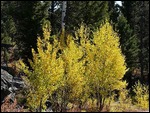



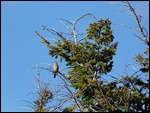

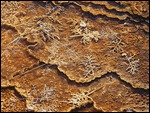











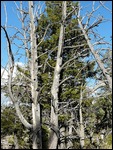


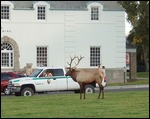


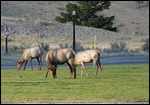



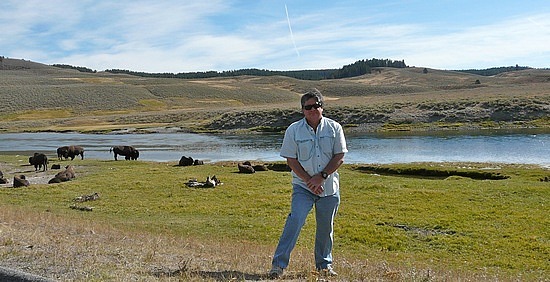
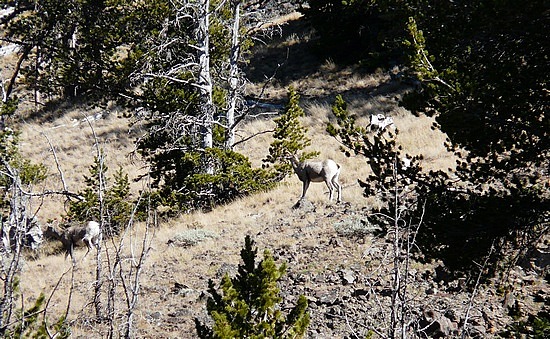
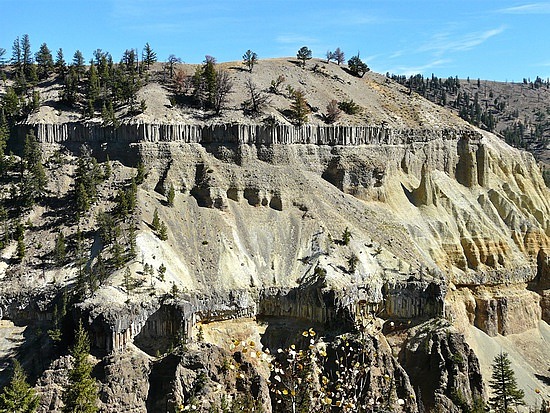


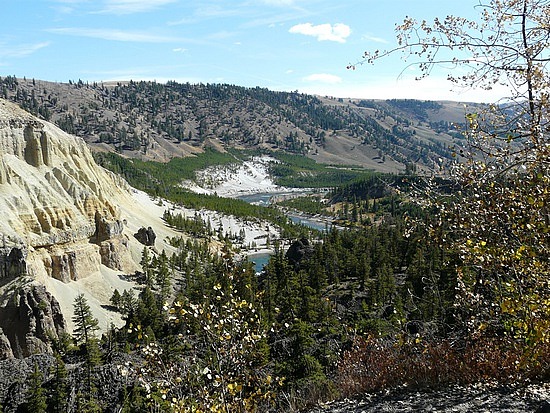
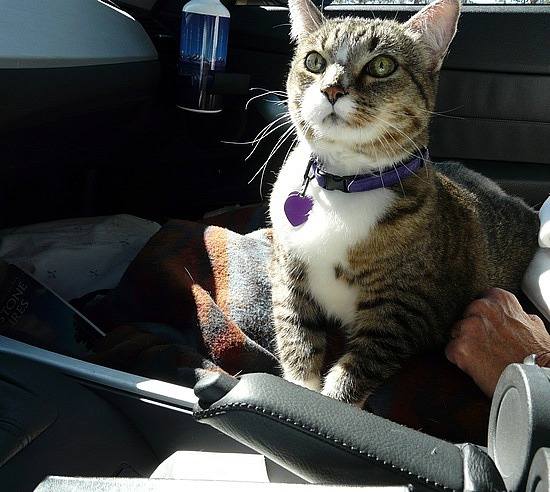


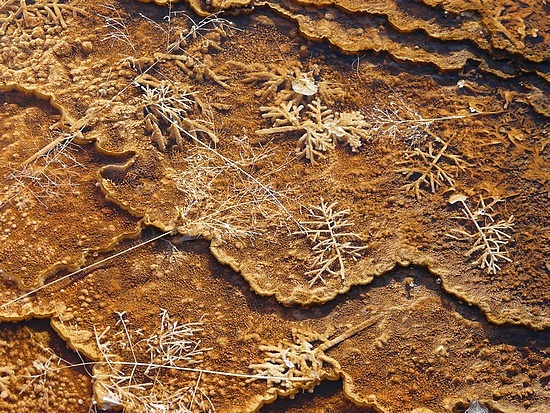


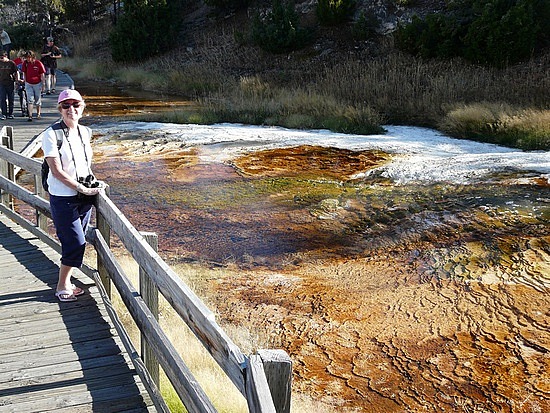









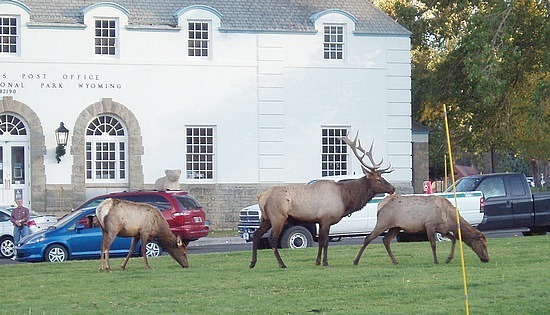

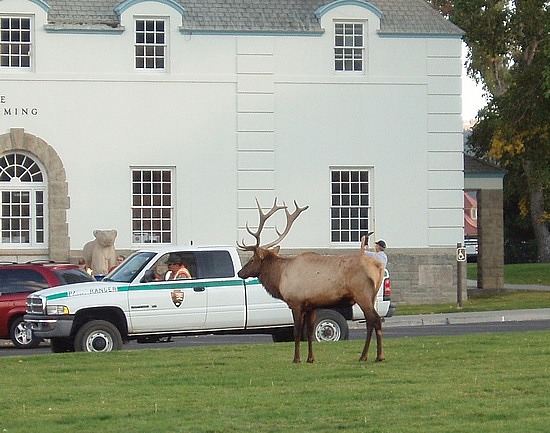





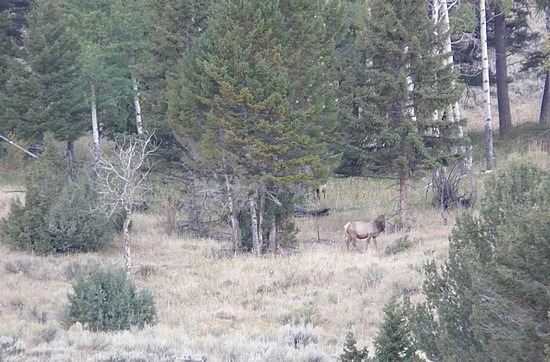
Comments